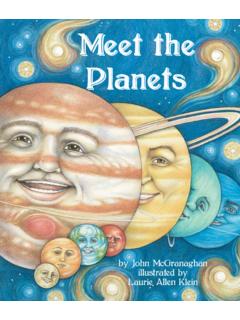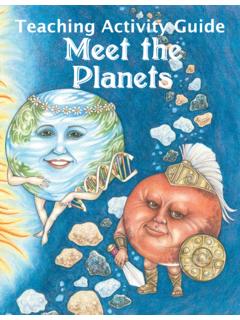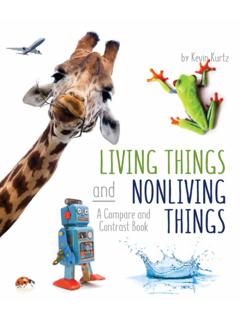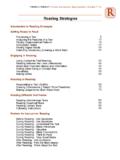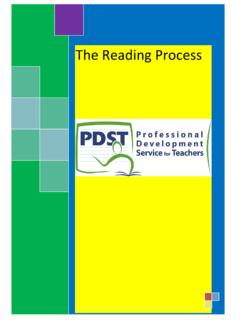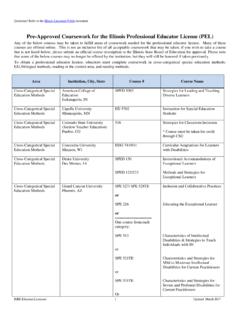Transcription of Teaching Activity Guide - Arbordale Publishing
1 Teaching Activity Guide Table of Contents4 How to Use This Activity Guide (General)5 What Do Children Already Know?5 Wildlife Rehabilitators: Pre- reading Questions6 Comprehension Questions & Writing Prompts6 Wildlife Rehabilitators: Art Scavenger Hunt7 Cross-Curricular Vocabulary Activities8 Wildlife Rehabilitators: Word Bank9 Wildlife Rehabilitators: Silly Sentences10 Wildlife Rehabilitators: Sequence Sentence Strips11 Wildlife Rehabilitators: Word Search12 Sanctuaries: Pre- reading Questions12 Sanctuaries: Writing Prompts13 Sanctuaries: Word Bank14 Sanctuaries: Silly Sentences15 Sanctuaries.
2 Word Families & Rhyming Words16 Zookeepers: Pre- reading Questions16 Zookeepers: Writing Prompts17 Zookeepers: Word Search18 Aquariums: Pre- reading Questions18 Aquariums: Writing Prompts19 Aquariums: Word Families & Rhyming Words20 Raptor Centers: Pre- reading Questionsby Jennifer Keats CurtisCopyright 2012-2015 Arbordale PublishingThese activities may be copied for personal and non-commercial use in educational PublishingMt. Pleasant, SC 2946421 Raptor Center: Writing Prompts22 Raptor Centers: Sequence Sentence Strips23 Raptor Centers: Word Search24 Primate School: Pre- reading Questions25 Primate School: Art Scavenger Hunt26 Primate School: Writing Prompts27 Primate School: Fill in the Conjunction28 Primate School: Parts of Speech29 Compare/Contrast.
3 Animal and Human Senses30 Edible Sorting and Classifying Activity32 Classifying Animals33 Vertebrate Classes34 Animal Chart35 Dichotomous (Yes/No) Key42 Comparing Animals45 Animal Sorting Cards53 Adaptations55 Science Journal (Vocabulary)67 Carrying an Animal to a Rehabilitator68 Math69 Math Cards71 Glossary76 Answers77 Zookeepers: Word Search78 Raptor Centers: Sequence Sentence Strips78 Raptor Center: Word Search80 Appendix A What Children Know Cards81 Appendix B Venn Diagram82 Appendix C MapHow to Use This Activity Guide (General)There are a wide variety of activities that teach or supplement all curricular areas.
4 The activities are easily adapted up or down depending on the age and abilities of the children involved. And, it is easy to pick and choose what is appropriate for your setting and the time involved. Most activities can be done with an individual child or a group of children. For teachers in the classroom: We understand that time is at a premium and that, especially in the early grades, much time is spent Teaching language arts. All Arbordale titles are specifically selected and developed to get children excited about learning other subjects (science, geography, social studies, math, etc.)
5 While reading (or being read to). These activities are designed to be as comprehensive and cross-curricular as possible. If you are Teaching sentence structure in writing, why not use sentences that teach science or social studies? We also know and understand that you must account for all activities done in the classroom. While each title is aligned to all of the state standards (both the text and the For Creative Minds), it would be near impossible to align all of these activities to each state s standards at each grade level. However, we do include some of the general wording of the CORE language arts and math standards, as well as some of the very general science or social studies standards.
6 You ll find them listed as objectives in italics. You should be able to match these objectives with your state standards fairly homeschooling parents and teachers in private schools: Use as above. Aren t you glad you don t have to worry about state standards?For parents/caregivers: Two of the most important gifts you can give your child are the love of reading and the desire to learn. Those passions are instilled in your child long before he or she steps into a classroom. Many adults enjoy reading historical fiction novels .. fun to read but also to learn (or remember) about historical events.
7 Not only does Arbordale publish stories that are fun to read and that can be used as bedtime books or quiet lap reading books, but each story has non-fiction facts woven through the story or has some underlying educational component to sneak in learning. Use the For Creative Minds section in the book itself and these activities to expand on your child s interest or curiosity in the subject. They are designed to introduce a subject so you don t need to be an expert (but you will probably look like one to your child!). Pick and choose the activities to help make learning fun!
8 For librarians and bookstore employees; after-school program leaders; and zoo, aquarium, nature center, park & museum educators: Whether reading a book for story time or using the book to supplement an educational program, feel free to use the activities in your programs. We have done the hard part for you. Arbordale Publishing 4 Arbordale Publishing 5 What Do Children Already Know?Young children are naturally inquisitive and are sponges for information. The whole purpose of this Activity is to help children verify the information they know (or think they know) and to get them thinking beyond the box about a particular subject.
9 Before reading the book, ask the children what they know about the subject. A list of suggested questions is below. The children should write down their answers (or adults for them if the children are not yet writing) on the chart found in Appendix A, index cards, or post-it notes. Their answers should be placed on a before reading panel. If doing this as a group, you could use a bulletin board or even a blackboard. If doing this with individual children, you can use a plain manila folder with the front cover the before reading panel.
10 Either way, you will need two more panels or sections one called correct answer and the other look for correct answer. Do the children have any more questions about the subject ? If so, write them down to see if they are answered in the reading the book, go back to the questions and answers and determine whether the children s answers were correct or not. If the answer was correct, move that card to the correct answer panel. If the answer was incorrect, go back to the book to find the correct information. If the child/children have more questions that were not answered, they should look them up.
